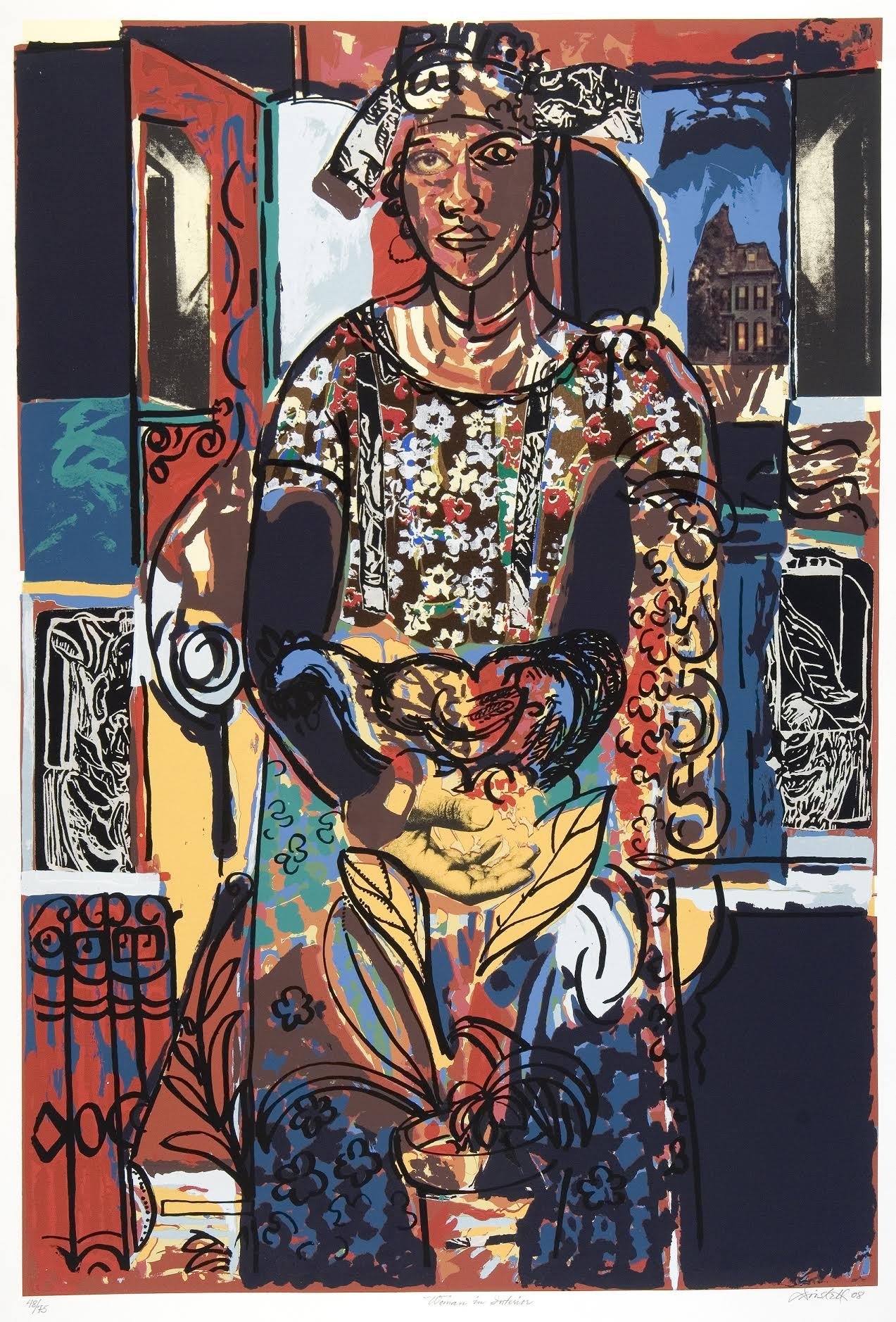The Story of Raven: From our Founder, Curlee Raven Holton
Curlee Raven Holton collaborating at The Experimental Printmaking Institute in Lafayette, PA
I came to Lafayette College in 1991 from New York City, where I was studying at the Robert Blackburn Printmaking workshop - the oldest non-profit printmaking in the country, founded by Robert Blackburn, a premier African American printmaker in the country. I was doing a residency there and was recruited to come to Lafayette College.
Faith Ringgold signing Mama Can Sing, Papa Can Blow, 2004
In 1993, I began working with artists like Faith Ringgold, Richard Anuszkiewicz, Chakaia Booker, Robert Beachum, and several other prominent artists. These were artists who had established themselves in the ’50s & ’60s and were invited to Lafayette College as part of their Grossman Artists program. This program was unique for a small liberal arts college because it attracted and brought major artists into an educational institution to do residency work, make art, and teach.
It was a unique way to teach about art and look at artmaking as a scholarly activity, and I was very interested in that. So in 1996, I founded The Experimental Printmaking Institute (EPI) to explore printmaking while encouraging student-based collaborations with artists from diverse cultural and social backgrounds, providing them with skilled and ambitious role models.
In 2006, EPI had its 10th anniversary. It was during that year that I met Jase Clark. He was a student at Kutztown University and had come to EPI to do some printmaking work and celebrate our 10th anniversary. Although we had numerous opportunities at EPI to create what we call “commercial projects,” EPI was a non-for-profit and focused more on creating opportunities for artists, not creating works for the art market. But I was interested in the possibilities of it. It was that summer in 2006 when I decided to start Raven Fine Art Editions.
Our first project was a piece with David Driskell called Woman in Interior. It was our first-ever commercial project, and I invited Jase to work on it with me, David Driskell, and a few of my other students. We did part of the work at the studio at Lafayette College and part of it in San Jose, Costa Rica, because I wanted to continue my work with international printmakers, which already included printers from Latin America, Japan, South Africa, and Europe.
This first project was very successful. We presented the edition of 40 to twenty-five of Driskell’s collectors, offering them two prints at a subscription price that was equal to just one of the prints. It wasn’t until after we offered this to the collectors that we got the prints appraised, which, to our surprise, were appraised at twice the amount of the original subscription cost. So we required each collector to gift one of the prints to an institution that didn’t already have a Driskell piece. In the end, the collectors got a tax writeoff for their “gift,” Driskell’s work was placed into 25 institutions, and they still got to keep one of the prints for their collection.
That was the beginning of Raven Editions. It was built to be an independent entity that could create commercial publications that were not in conflict with my work at Lafayette. But, it was about publishing works, placing them in museums, and making a profit that allowed me to invest in more projects. Raven Editions’ creation met a concern for many artists because it generated a marketplace for their work and facilitated the placement of these artists into major institutions.
Raven Fine Art Editions’ new studio space in Easton, PA
Printing press being moved into the new studio in Easton, PA.





